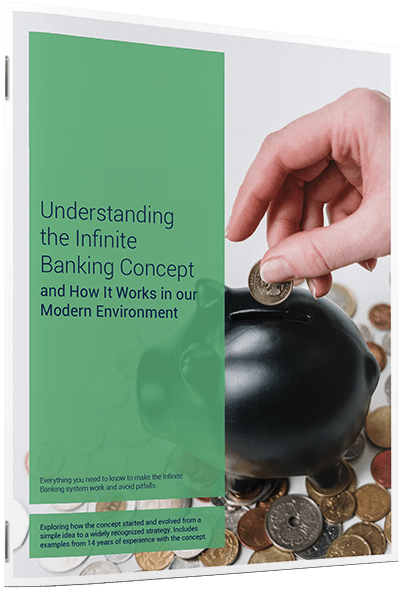702-660-7000
702-660-7000

Deciding the most effective way to invest $10,000 isn’t straightforward. If someone offers you a quick, one-size-fits-all answer without understanding your financial background and aspirations, be wary – it’s likely not sound advice.
When you look online, you’ll discover a myriad of investment opportunities, from cost-effective index funds and ETFs to more hands-on trading strategies and even digital currencies. However, just because you can invest in these with $10,000 doesn’t mean they’re the best choice for you.
This article will provide insights on how to manage your funds wisely, helping you dodge unnecessary taxes, fees, and penalties as you explore investment avenues for your $10,000.
It’s crucial to assess your current financial situation before diving into investment opportunities. Consider asking yourself some key questions: Where do you stand financially at the moment? Is your income steady? Do you manage to save a portion of your earnings each month? If so, how much?
When thinking about your $10,000 investment, consider the following:
It’s common for individuals to be eager about investing without being fully prepared for it. While enthusiasm is great, early caution can prevent potential limitations down the line.
For instance, we once had a person contact our office seeking advice on financing more real estate investments. Upon discussion, it became clear that he lacked liquid savings and had recently bought his first investment property, financing the down payment with a credit card. The property wasn’t generating income yet—a common oversight among new real estate investors who are optimistic about quick returns—and the credit card interest was becoming a significant burden. Clearly, he was not ready for the level of real estate investing he had in mind, which severely limited his options.
So, how solid is your financial groundwork? We use an illustrative model resembling a toy donut stack to help prospective investors gauge their readiness. This model comprises several layers:
Disregarding the sequence or balance of these elements can jeopardize your financial future. To better understand this concept, we offer a brief video tutorial illustrating this model.
If you’re uncertain about your financial inflow and outflow, the 10-20-70 principle could offer some clarity. This approach advocates for allocating your income into specific categories to ensure financial stability and growth.
But how do you determine if your financial base is sturdy enough for investing? There’s no universal answer, but considering the following may provide some guidance.
Most people agree on the importance of having a balanced cash flow and a safety net. The size of this emergency fund varies among individuals; some find comfort in saving 3-6 months’ worth of expenses, while others, particularly business owners or aspiring entrepreneurs, might opt for a 6-12 month cushion.
Clients of McFie Insurance often prefer to accumulate their emergency and additional reserves within participating whole life insurance policies. This method allows their funds to grow beyond the minimal interest rates of traditional savings accounts and remain shielded from the volatility of financial markets until they’re prepared to take on the inherent risks of broader investments.
This approach not only addresses the need for protection and savings, as highlighted in the previously mentioned video, but also offers guaranteed growth of cash value. This ensures liquidity remains high, enabling policyholders to finance significant life events or invest when opportunities arise, even during market downturns, without suffering losses associated with market-linked investments. We’ll go deeper into this strategy later in the article.
 | Understanding the Infinite Banking Concept and How It Works In Our Modern Environment 31-page eBook from McFie Insurance Order here> |
Understanding your current financial situation is the first step toward defining where you want to be in the future. Recognizing that effective goals are typically broken down into achievable steps from your current position is crucial.
For instance, aspiring to be a millionaire is a commendable dream, but without a feasible plan, it might not be a realistic goal—at least not immediately.
Many aspire for a degree of financial independence or envision retiring comfortably at a certain age. However, the path to achieving these goals can vary greatly among individuals. What worked for someone you read about online may not necessarily be the best approach for you.
There are, however, certain strategies that can aid in building sustainable wealth over time. Investing time to research and outline what a robust financial foundation means for you and your family is essential. Establishing realistic, actionable goals based on this foundation is a wise next step.
Once you’re ready to start investing, you’ll encounter various management styles to choose from, broadly categorized as active or passive.
Active investors dive deep into investment strategies, selecting a mix of stocks, bonds, or other assets like mutual funds based on specific models or approaches. They aim to capitalize on market trends or events, often buying and selling assets more frequently than their passive counterparts. This higher level of activity can lead to greater fees or commissions, which can accumulate significantly over time. Despite their efforts, active investors don’t always outperform the market.
On the flip side, passive investors typically adopt a “buy and hold” strategy, which usually involves lower management fees. They often opt for a blend of low-cost mutual funds, index funds, and ETFs, aiming to mirror the market’s performance over time, which can also support diversification in smaller portfolios. This method is favored not just by individual investors looking to reduce fees, but also by many large investors who prioritize fee minimization regardless of portfolio size.
Both active and passive investors might seek the expertise of an investment advisor to help choose suitable investments and sift through research to align with their financial goals. Advisors can manage accounts and handle trading on behalf of clients. Meanwhile, some passive investors might prefer using robo-advisors to further reduce fees while maintaining a balanced portfolio over time through automated, logic-based adjustments.
At some point in your investment journey, you’ll encounter the concept of risk tolerance. This is often assessed through a questionnaire that mixes objective questions with more subjective ones, aiming to gauge your emotional reaction to potential investment losses.
The responses from a risk tolerance questionnaire provide a general sense of your investment comfort level and help advisors tailor their recommendations to suit you. It’s worth noting that completing different questionnaires may lead to varying results, due to differences in the questions asked and how your answers are interpreted.
While risk tolerance is a valuable consideration, some prefer to also focus on loss avoidance. This approach involves thinking about ways to minimize potential losses and determining the extent of loss you can tolerate before it would compel you to reconsider your investment approach.
Your reaction to investment losses can differ based on your chosen strategy. It’s wise to contemplate how you might handle a loss beforehand, so you’re not left making critical decisions in the midst of processing an actual financial setback.
When it comes to investing, people often use tax-advantaged retirement accounts like 401(k)s, Traditional or Roth IRAs, and SIMPLE IRAs, among others. These accounts offer special tax benefits that encourage saving for retirement. For example, with most retirement plans, you get tax breaks when you contribute, and then you’re taxed on withdrawals during retirement, usually at a higher amount due to growth.
Roth accounts work a bit differently. They don’t give you a tax break when you put money in, but they allow your investments to grow tax-free, and you can make tax-free withdrawals after you’re 59 ½ years old. These tax-advantaged accounts have rules about how much you can contribute and what you can invest in. It’s important to note that investing in something that benefits you personally outside of the retirement account can lead to penalties.
A common piece of financial advice is to max out your contributions to these tax-advantaged accounts. While this strategy can reduce your taxes now and increase your account balance over time, it doesn’t guarantee lower taxes in retirement, better investment choices, or more money after taxes.
If you’re thinking about using your $10,000 investment for something before you turn 59 ½, like starting a business, be aware that withdrawing early from most tax-advantaged plans can result in a 10% penalty.
You can also invest through regular brokerage accounts, which don’t have the same tax benefits but offer more flexibility. Direct investments in assets like real estate, currencies, or business ventures are other options to consider.
After setting up and funding your investment account, you get to pick from various investment types available through your chosen account and brokerage or custodian. Common investment choices include:
For further detail on different types of investments, checkout our article on the different types of investments.

An easy read and a perfect introduction to whole life insurance and The Perpetual Wealth Code™ Available in eBook or Audiobook format.
Download here>
If you’re investing through an employer-sponsored retirement plan, your options might be limited to a set of 20-30 investment choices pre-selected by the plan.
While McFie Insurance doesn’t offer investment advice, our experience with clients has shown us a range of investment outcomes. What we’ve observed is that applying common sense and staying actively involved in your investment decisions tends to lead to better outcomes. Investors who approach their investments with the seriousness of a business venture, rather than relying solely on experts for advice, often fare better.
Such diligent investors might still consult with financial advisors, brokers, and other professionals to leverage their expertise, but ultimately, they make their own strategic decisions. They typically have a solid grasp of the potential benefits and risks associated with their chosen investments.
Based on our observations, individuals who build a financial base using life insurance’s cash value generally find themselves with broader investment opportunities compared to those who initially focus on investments and consider adding protection and cash reserves later.
For instance, many clients have tapped into their life insurance cash values to kickstart family businesses or invest in real estate that they can renovate and rent out. Such ventures might not have been possible without the ready access to funds provided by borrowing against their life insurance cash values.
Maintaining a reserve in life insurance cash values can also be a strategic move as retirement nears. We’ve seen that individuals with a mix of life insurance assets and other investments tend to have more passive income options in retirement. Moreover, the life insurance component offers a buffer against market fluctuations, allowing for income to be drawn from the cash values during downturns in other investments.
At McFie Insurance, we specialize in designing participating whole life insurance policies that emphasize high cash value, ensuring both a solid savings reserve and life insurance coverage. This coverage can eventually serve as a legacy, beyond its initial role in income protection.
We advise our clients to steer clear of unnecessary fees, penalties, and taxes whenever possible. We believe that retaining more of your earnings contributes to greater financial security and confidence in the future.
If you’re sitting on an extra $10,000, you’re likely aware that it has the potential to work harder for you than it would by merely sitting in a savings account with minimal returns.
Deciding between bolstering your financial safety net with a life insurance policy that offers solid guarantees or opting for potentially higher-yielding investments (which also carry a higher risk of loss) is a personal choice. For many, a mix of both strategies provides a balanced approach. Our goal is to ensure you’re equipped with the necessary information to make choices that align with your personal goals and needs.
If you’re curious about how integrating life insurance into your financial plan could work for you, consider looking into our Quick Start Guide. And if you’re interested in seeing what the numbers might look like for your specific situation, feel free to reach out to us at 702-660-7000 for a no-cost strategy session.
 | Discover The Perpetual Wealth Code™, an easy system to maximize the control of your savings and minimize penalties so you can keep more of the money you make and build wealth every year WITHOUT riding the market roller-coaster. Download here> |
Note: Investing information provided on this page is for educational purposes only. McFie Insurance does not offer advisory or brokerage services, and does not recommend or advise investors to buy or sell particular securities.
 by John T. McFie
by John T. McFie
I am a licensed life insurance agent, and co-host of the Wealth Talks podcast.
At age 14 I started developing spreadsheet models and software systems to help my Dad share financial concepts with clients.
Skipped college at 17 recognizing the overinflated value and prices of most college degrees and built more financial software instead (see MoneyTools.net). Still a strong advocate of higher education without going to college. I enjoy making financial strategies clear and working through the numbers to prove results you can count upon.